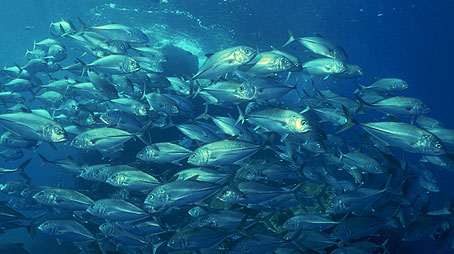| SEARCH |
-

Nov 17, 2015
Reflections on a three-decade legacy
The International Geosphere-Biosphere Programme (IGBP) will come to a close at t...
-
Nov 17, 2015
Use of and access to content on this website
Text and images produced by IGBP in house are free to use with appropriate credi...
-
Nov 12, 2015
Bella Gaia performance and panel discussion to mark IGBP's closure
A musical performance by Bella Gaia will celebrate the achievements and legacy o...
-

Towards Future Earth:
evolution or revolution?
During its three decades of existence, the International Geosphere-Biosphere Pro...
-
A personal note on IGBP and the social sciences
Humans are an integral component of the Earth system as conceptualised by IGBP. João Morais recalls key milestones in IGBP’s engagement with the social sciences and offers some words of advice for Future Earth.
-
IGBP and Earth observation:
a co-evolution
The iconic images of Earth beamed back by the earliest spacecraft helped to galvanise interest in our planet’s environment. The subsequent evolution and development of satellites for Earth observation has been intricately linked with that of IGBP and other global-change research programmes, write Jack Kaye and Cat Downy .
-
Deltas at risk
Around 500 million people worldwide live on deltas, but many of the world's deltas are sinking due ...
-
Climate change: the state of the science
A new data visualization released on the first day of the plenary negotiations at the UNFCCC’s clima...
-
Climate Change:
the State of the Science
Videos now online from the Stockholm public forum to mark the launch of the IPCC's climate report, 2...

Upper-Ocean Nutrient Limitation
With this in mind, this joint IGBP-SCOR (Scientific Committee on Oceanic Research) fast-track initiative aims to survey our current understanding of nutrient limitation in the upper oceans, identify gaps in knowledge and evaluate methodologies used to assess nutrient limitation. All potentially limiting nutrients (macronutrients such as nitrogen, micronutrients such as iron and organic nutrients such as vitamin B12) will be considered.
Facts
Coordinators
Mark Moore (National Oceanography Centre, Southampton),
Matt Mills (Stanford University),
Doug Wallace (SOLAS) and
Emily Breviere (SOLAS)
Specific goals
1. To synthesise the current state of knowledge concerning patterns of upper ocean nutrient limitation, including identification of current observational gaps
2. Based on this synthesis, to recommend future avenues of research, taking specific account of the potential for past and future global change and linkages to the carbon cycle
3. To recommend a rigorous definitional framework for describing upper ocean nutrient limitation, with specific reference to multiple timescales and cross-disciplinary boundaries
4. To critically evaluate the techniques and methods currently used to assess upper ocean nutrient limitation
Products
Nature Geoscience Marine Cycles in Flux, (Insights, September 2013)
Processes and patterns of oceanic nutrient limitation.
Meetings
- A special session at AGU/ASLO Ocean Sciences meeting in Oregon (February 2010).
- Workshop in November 2010 in the UK
- This initiative is also receiving support from the US Ocean Carbon and Biogeochemistry program (http://www.us-ocb.org/)
IGBP closed at the end of 2015. This website is no longer updated.
-

Global Change Magazine No. 84
This final issue of the magazine takes stock of IGBP’s scientific and institutional accomplishments as well as its contributions to policy and capacity building. It features interviews of several past...
-

Global Change Magazine No. 83
This issue features a special section on carbon. You can read about peak greenhouse-gas emissions in China, the mitigation of black carbon emissions and the effect of the 2010-2011 La Niña event on gl...
-
INTERGOVERNMENTAL PANEL ON CLIMATE CHANGE:
How green is my future?
UN panel foresees big growth in renewable energy, but policies will dictate just how big.
-
UK:
'The Anthropocene: a new epoch of geological time?'
Royal Society, Philosphical Transactions A





















